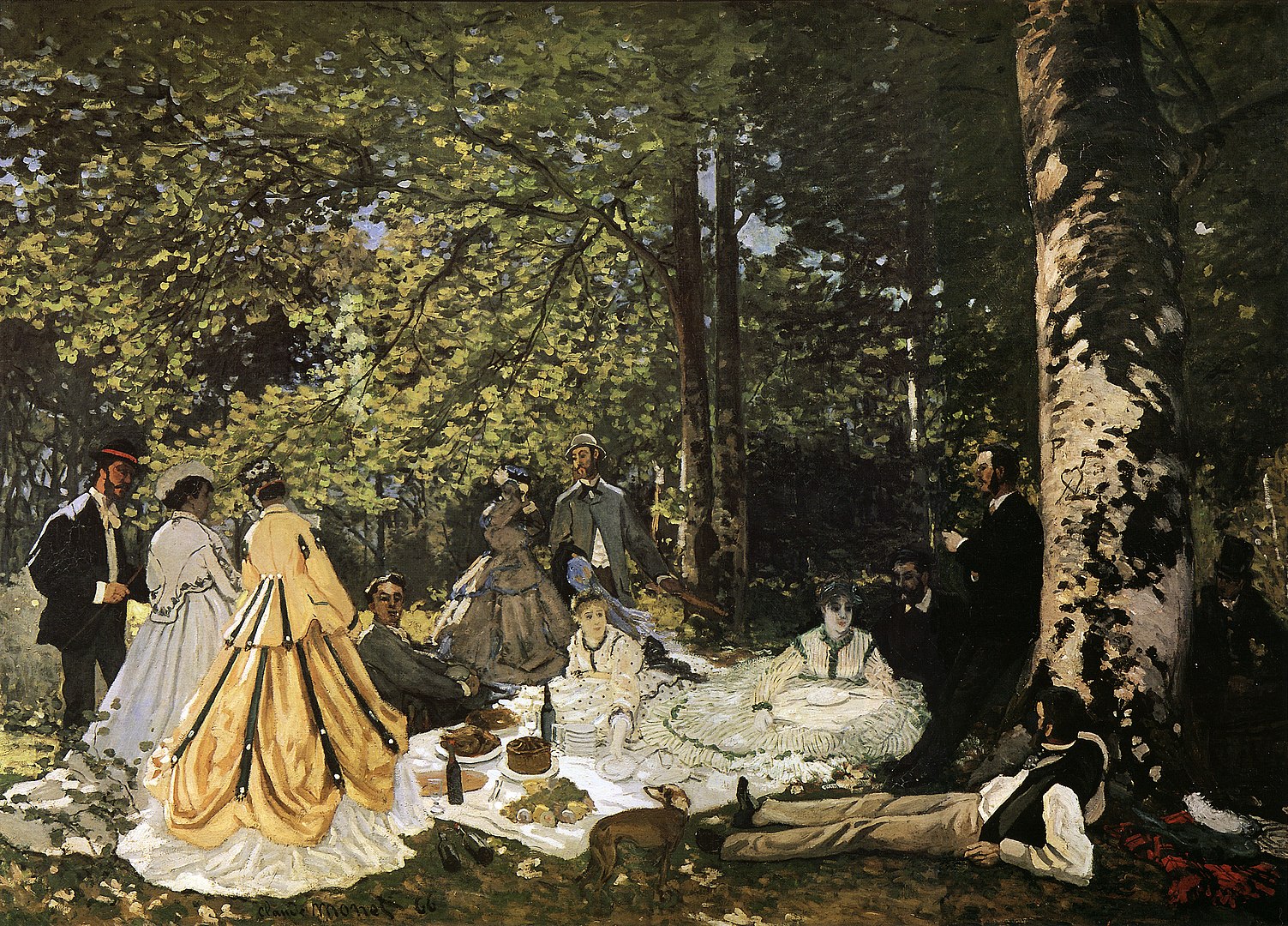Le déjeuner sur l’herbe

Claude Monet painted Le déjeuner sur l’herbe for the 1866 Paris Salon entry and as a challenge to Édouard Manet with his rather frivolous painting of the same name. The artist worked from 1865 to 1866 in nature in the forest of Fontainebleau near Chailly and then in his studio in Paris. Having initially painted a smaller version of the composition measuring 130 × 181 centimetres, Monet began transferring it to a canvas 4 × 6 metres high and 6 metres long respectively. Faced with the problems of painting such enormous dimensions, he rewrote it several times, including under the influence of comments by Gustave Courbet, which finally spoiled the canvas and stopped working on it altogether.
In order to at least show something at the Salon of 1866, Monet painted Woman in Green[fr] at short notice, which was favourably received by the critics. However, the following year, Women in the Garden, based on Breakfast, was not approved for showing by the salon jury in order to 'save art' from this 'repugnant' Impressionism. Finding himself in dire financial straits, in 1878 the artist left the unfinished Breakfast on the Grass to a landlord of a house he was renting with his family in Argantay as collateral for an overdue debt. In 1884, Monet bought the painting back and cut it into three pieces. One fragment was lost, having managed to rot during storage in the landlord's cellar, while the other two through private hands ended up in the Musée d'Orsay in Paris, where they remain today. The smaller version was bought in 1904 by the Russian collector Sergei Shchukin and after the nationalisation of his gallery during the Soviet era was transferred to the State Museum of New Western Art. Later, when the museum was disbanded in 1948, it was transferred to the Pushkin State Museum of Fine Arts in Moscow, where it is now preserved.